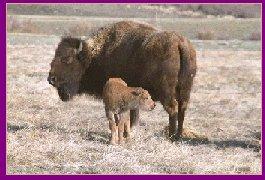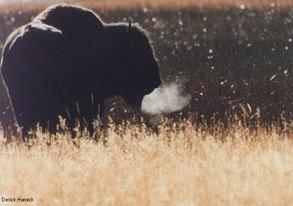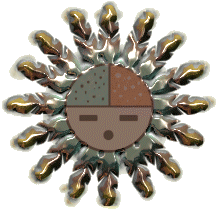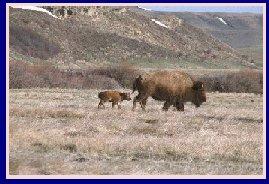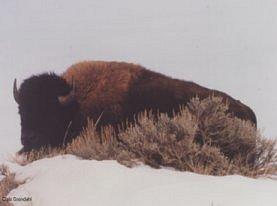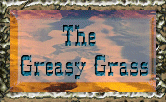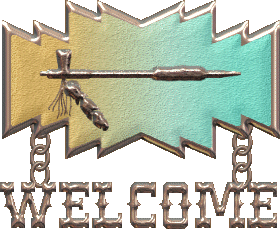
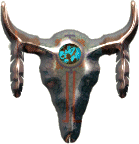
The Buffalo
Jump
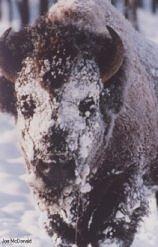

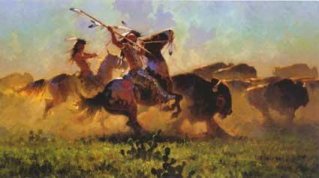
The Buffalo Jump Story
The Buffalo
Jump was a steep canyon or cliff
that was
used to kill the buffalo during a hunt.
It was pretty
much the standard before the horse, bow,
and lance
were used to hunt these massive beasts,
and continued
with the use of the "Buffalo Horse".
The buffalo
would be herded and chased to the jump,
and then
over the edge they would plummet to certain death.
The buffalo
would then be used for meat, as well as a variety of
neccessities
like clothing, shelter (hides),
and their
bones and horns were also used to make tools,
such as
spoons, knives, and clubs.
Nothing
was wasted.
These "jumps"
as they are called have been used
as far back
as 5000 years, and 2000 years
by Native
Americans.
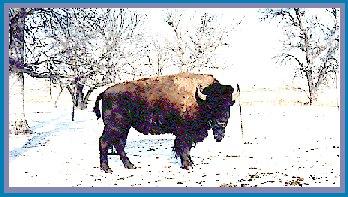
THE BUFFALO
REPRESENTS
THE AMERICAN
INDIAN SPIRIT
The American buffalo, also known as bison,
has always
held great meaning for American Indian people.
To Indian
people buffalo represent their spirit and
remind them
of how their lives were once lived,
free and
in harmony with nature. In the 1880's, the white man
recognized the reliance Indian Tribes had on the buffalo.
Thus began
the systematic destruction of the buffalo
to try to
subjugate the western Tribal Nations.
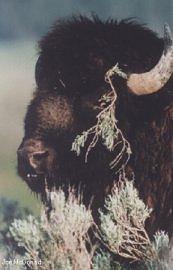
HEAL THE SPIRIT
Without the buffalo, the independent life of the Indian people
could no
longer be maintained.
The Indian
spirit, along with that of the buffalo,
suffered
an enormous loss.
At that
time, Tribes began to sign treaties with the U.S. Government
in an attempt
to protect the land and the buffalo
for their
future generations.
The destruction
of the buffalo herds
and the
associated devastation
to the Tribes
disrupted the self-sufficient lifestyle of the
Indian people more than all other federal policies to date.
To reestablish
healthy buffalo populations on Tribal lands
is to reestablish
hope for the Indian people.
Members
of the InterTribal Bison Cooperative (ITBC)
understand
that reintroduction of the buffalo to Tribal lands
will help
heal the spirit of both the Indian people and the buffalo.
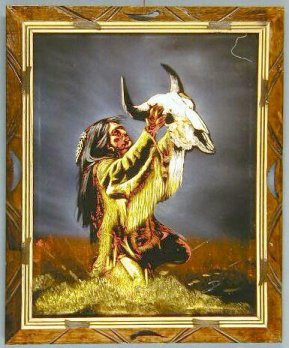
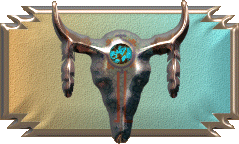
Buffalo
Facts
When stampeding, a buffalo can reach and sustain speeds of 50 km/hr.
It is estimated
that 60 million buffalo roamed the Great Plains
at the time
of the arrival of Europeans in North America.
During the summer months the buffalo hair is at its shortest.
Skins were
taken for lodge covers and numerous other
articles
were made from the soft, dressed skins.
Natural topographic
barriers such as coulees, depressions, or
hills were
sometimes used to funnel buffalo to the jump.
Buffalo herds
were led by one or two individual animals,
usually
females.
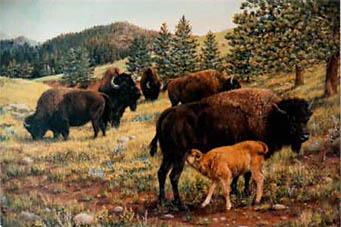
Some meat
was made into pemmican by first sun-drying it,
then pulverizing
the dried meat with a stone maul and mixing
this with
buffalo fat and grease. To add flavor to pemmican,
fruit such
as chokecherries were then mixed together in a
parfleche
container and pounded to remove all air form the food.
This pounded
mixture, when carefully prepared,
would keep
in a tight parfleche container for many months.
Buffalo horns were scraped and formed into spoons.
Buffalo tongues
were often given to medicine men or women,
who were
responsible for ensuring the success of the hunt.
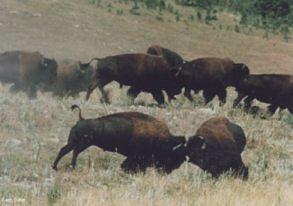
The buffalo
is a member of the Bovidae family
that includes
beef cows and oxen.
Buffalo far
outnumbered the Native American population
during the
pre-European era.
A female buffalo stands about 5 feet tall at the shoulder and may weigh up to 1,000 pounds.
The male reaches 6 feet and 2,000 pounds.
Both sexes have horns.
Most of our
early pioneer trails and Indian trails
got their
start as buffalo roads.
Buffalo often live 35 years or more.
The best-tasting buffalo meat is from younger bulls.
The female buffalo may produce 20 to 25 calves in her lifetime.
The buffalo
may appear stiff and plodding, but it can out-run and
out-jump
you by a factor of two.
It is usually
better to admire buffalo from a safe distance.
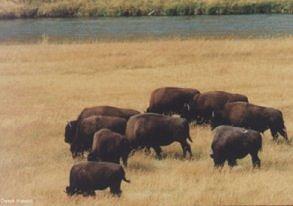


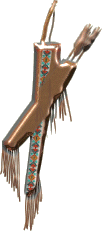
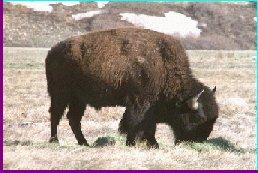
The Song Playing
is "Animal Song"
by Permission
of Elan Michaels
